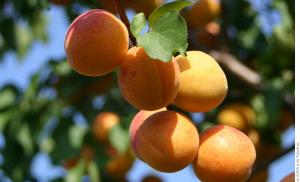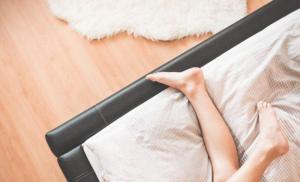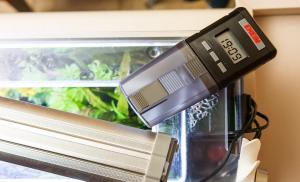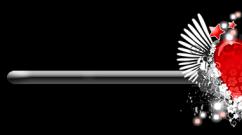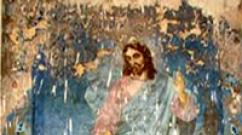Radium from the barn. How Marie and Pierre Curie Changed the World
French physicist Pierre Curie was born in Paris. He was the younger of two sons of the physician Eugène Curie and Sophie-Claire (Depoulli) Curie. The father decided to give his independent and reflective son a home education. The boy turned out to be such a diligent student that in 1876, at the age of sixteen, he received degree Bachelor of the University of Paris (Sorbonne). Two years later, he received a licentiate degree (equivalent to a master's degree) in physical sciences.
In 1878, Curie became a demonstrator in the physical laboratory of the Sorbonne, where he began to study the nature of crystals. Together with his older brother Jacques, who worked in the mineralogical laboratory of the university, Curie carried out intensive experimental work in this area for four years. The Curie brothers discovered piezoelectricity - the appearance of electrical charges on the surface of certain crystals under the action of an external force. They also discovered the opposite effect: the same crystals under the action of electric field experience compression. If an alternating current is applied to such crystals, they can be made to oscillate at ultra-high frequencies, at which the crystals will emit sound waves beyond the range of human hearing. Such crystals have become very important components of such radio equipment as microphones, amplifiers and stereos. The Curie brothers designed and built such a laboratory device as a piezoelectric quartz balancer, which creates an electric charge proportional to the applied force. It can be considered the forerunner of the main components and modules of modern quartz watches and radio transmitters. In 1882, on the recommendation of the English physicist William Thomson, Curie was appointed head of the laboratory of the new Municipal School of Industrial Physics and Chemistry. Although the salary at the school was more than modest, Curie remained head of the laboratory for twenty-two years. A year after the appointment of Curie as head of the laboratory, the brothers' cooperation ceased, as Jacques left Paris to become a professor of mineralogy at the University of Montpellier.
In the period from 1883 to 1895, Curie completed a large series of papers, mainly on the physics of crystals. His articles on the geometric symmetry of crystals have not lost their significance for crystallographers to this day. From 1890 to 1895, Curie studied the magnetic properties of substances at various temperatures. Based on a large number of experimental data in his doctoral dissertation, the relationship between temperature and magnetization was established, which later became known as the Curie law.
Working on my dissertation. Curie in 1894 met Maria Skłodowska, a young Polish student Faculty of Physics Sorbonne. They married in July 1895, a few months after Curie completed his doctoral dissertation. In 1897, shortly after the birth of her first child, Marie Curie began research on radioactivity, which soon absorbed Pierre's attention for the rest of his life.
In 1896, Henri Becquerel discovered that uranium compounds constantly emit radiation capable of illuminating a photographic plate. Having chosen this phenomenon as the topic of her doctoral dissertation, Marie began to find out if other compounds emit "Becquerel rays". Since Becquerel discovered that the radiation emitted by uranium increased the electrical conductivity of the air near the preparations, she used the Curie brothers' piezoelectric quartz balancer to measure the electrical conductivity. Soon Marie Curie came to the conclusion that only uranium, thorium and compounds of these two elements emit Becquerel radiation, which she later called radioactivity. Maria, at the very beginning of her research, made an important discovery: uranium resin blende (uranium ore) electrifies the surrounding air much more than the uranium and thorium compounds contained in it, and even than pure uranium. From this observation, she concluded that there was still an unknown highly radioactive element in the uranium resin blende. In 1898, Marie Curie reported the results of her experiments to the French Academy of Sciences. Convinced that his wife's hypothesis was not only correct but very important, Curie left behind his own research to help Marie isolate the elusive element. Since that time, the interests of the Curies as researchers have merged so completely that even in their laboratory notes they always used the pronoun "we".
The Curies set themselves the task of separating the uranium resin blende into its chemical components. After laborious operations, they received a small amount of a substance that had the highest radioactivity. It turned out. that the allocated portion contains not one, but two unknown radioactive elements. In July 1898, the Curies published an article "On the radioactive substance contained in uranium resin blende", which reported the discovery of one of the elements, named polonium in honor of the birthplace of Maria Sklodowska. In December, they announced the discovery of a second element, which they named radium. Both new elements were many times more radioactive than uranium or thorium, and amounted to one millionth of uranium resin blende. In order to isolate radium from the ore in sufficient quantities to determine its atomic weight, the Curies processed several tons of uranium resin blende over the next four years. Working in primitive and harmful conditions They performed their chemical separations in huge vats set in a leaky shed, and all their analysis in the tiny, poorly equipped Public School laboratory.
In September 1902, the Curies reported that they were able to isolate one tenth of a gram of radium chloride and determine the atomic mass of radium, which turned out to be 225. bluish glow and warmth. This fantastic-looking substance attracted the attention of the whole world. Recognition and awards for his discovery came almost immediately.
The Curies published a huge amount of information on radioactivity collected during their research: from 1898 to 1904 they published thirty-six papers. Even before completing their research. The Curies encouraged other physicists to also study radioactivity. In 1903, Ernest Rutherford and Frederick Soddy suggested that radioactive emissions are associated with the decay of atomic nuclei. Decaying (losing some of the particles that form them), radioactive nuclei undergo transmutation into other elements. The Curies were among the first to realize that radium could also be used in medical purposes. Noticing the effect of radiation on living tissues, they suggested that radium preparations could be useful in the treatment of tumor diseases.
The Royal Swedish Academy of Sciences has awarded the Curies half Nobel Prize in Physics 1903 "in recognition... of their joint investigations into the phenomena of radiation discovered by Prof. Henri Becquerel", with whom they shared the prize. The Curies were ill and were unable to attend the awards ceremony. In his Nobel Lecture two years later, Curie pointed out the potential danger posed by radioactive substances if they fell into the wrong hands, and added that he "belongs to those who, along with Nobel, believe that new discoveries will bring humanity more trouble than good."
Radium is an element that is extremely rare in nature, and prices for it, taking into account its medical value, increased rapidly. The Curies lived in poverty, and the lack of funds could not but affect their research. At the same time, they resolutely abandoned the patent for their extraction method, as well as the prospects commercial use radium. According to them, this would be contrary to the spirit of science - the free exchange of knowledge. Despite the fact that such a refusal deprived them of considerable profit, the Curie's financial situation improved after receiving the Nobel Prize and other awards.
In October 1904, Curie was appointed professor of physics at the Sorbonne, and Marie Curie was appointed head of the laboratory, which had previously been directed by her husband. In December of the same year, Curie's second daughter was born. Increased incomes, improved research funding, plans for a new laboratory, and the admiration and recognition of the world scientific community were to make the subsequent years of the Curies fruitful. But, like Becquerel, Curie passed away too early, not having time to enjoy the triumph and accomplish his plan. On a rainy day on April 19, 1906, while crossing a street in Paris, he slipped and fell. His head fell under the wheel of a passing horse-drawn carriage. Death came instantly.
Marie Curie inherited his chair at the Sorbonne, where she continued her research on radium. In 1910 she succeeded in isolating pure metallic radium, and in 1911 she was awarded the Nobel Prize in Chemistry. In 1923, Marie published a biography of Curie. Eldest daughter Curie, Irene (Irene Joliot-Curie), shared the 1935 Nobel Prize in Chemistry with her husband; the youngest, Eva, became a concert pianist and biographer of her mother. Serious, restrained, completely focused on his work, Curie was at the same time a kind and sympathetic person. He was widely known as an amateur naturalist. One of his favorite pastimes was walking or cycling. Despite the busyness in the laboratory and family concerns, the Curies found time for joint walks.
In addition to the Nobel Prize, Curie was awarded several other awards and honorary titles, including the Davy Medal of the Royal Society of London (1903) and the Matteucci Gold Medal of the Italian National Academy of Sciences (1904). He was elected to the French Academy of Sciences (1905).
Disappointed in the first love, people can hide in the "shell" - completely devote themselves to some activity and avoid everything related to the opposite sex. Maria Sklodowska did exactly the same when she came to Paris to study at the university. But her “shell” was destined to crack one day and reveal to the world the miracle of true love.
The Sklodowski family lived in their native Poland hard and poorly. To older sister Bronislava was able to get higher education, Maria, after graduating from high school, had to work as a governess in a rich house. There she met her first love - Kazimir, the master's son, who could not resist the charm of young Mary. However, Casimir's parents felt that the governess was not a match for their son. The young man obeyed his parental will and refused to meet with Mary. When she learned that social status was more important to him than love, the girl sobbed incessantly. It seemed to her that her heart was broken forever and that no man would ever live in it again.
Now Maria has only one love left - science. As soon as the opportunity presented itself, Maria went to her sister in Paris and entered the Sorbonne. The girl wanted to get two diplomas at once - physics and mathematics, which means that she had to study twice as much.
From that moment began the life of Maria Sklodowska as a selfless scientist. She almost did not communicate with people, spent all her time experimenting, forgetting to eat. Maria was sure that not a single man would pay attention to a woman whose hands were eaten away by acid, and her thoughts were occupied with formulas. But Maria was wrong - it was thanks to science that she met her future husband.
Once a familiar physicist introduced Sklodowska to a man who was working on a similar scientific problem. Maria saw a man with a striking appearance and character. His gaze was dreamy, and a slight absent-mindedness spoke of his passion for what he loved. Pierre Curú, like Skłodowska, studied physics and recently discovered the ability of a substance to produce an electric charge when it changes shape. Of course, the couple immediately found something to discuss.
After parting, they both could not wait new meeting. Leafing through textbooks in her tiny room, Maria thought about what brilliant ideas Pierre had and what kind of person he was. amazing person. And Curie, wiping instruments in his own laboratory, recalled the enterprising girl, her revolutionary theories for science and blond curls. For the first time in his life, Pierre noticed that in front of him was a woman, and not just a physicist ...
Their romance, like all subsequent life, proceeded in the laboratory, behind test tubes and physical experiments. They wrote love notes to each other in the margins of scientific pamphlets, and best dates there were lectures by famous scientists. Pierre felt that he had finally found a woman who understood him, and Maria was happy that she was seen as more than just a poor student or a promising scientist.
A year later, Pierre and Maria got married. They didn't even have money to buy wedding rings, a wedding attire the bride was replaced by a simple dark dress, in which it was convenient to do experiments. The newlyweds did not grieve because of their poverty. They loved each other - and science!
After the wedding, the couple began their famous research on radioactivity. They conducted the experiments in a simple barn, without equipment, they had to take turns sitting with the children so that the experiment would not be interrupted. But all this did not cool their scientific fervor - and even more so love. Science, which at first became a “shell” for Pierre and Maria, with which they fenced themselves off from people, helped them to unite with each other and open up to the outside world. In their publications, they never separated each other and always wrote "we found", they unanimously decided not to patent their discoveries so that anyone could benefit from the results, and together they received the Nobel Prize in Physics in 1903. In the marriage of Pierre and Maria, two daughters were born, one of whom Irene later also became a scientist and also received the Nobel Prize. After years happy marriage, rich scientific work, Marie Curie writes in her diary: "We were created to live together, and our marriage was to take place."
And two years later he became a licentiate of physical sciences. With an assistant, he worked with his older brother Jacques in the mineralogical laboratory of the Sorbonne. Together they discovered the piezoelectric effect. Then he moved to the Sorbonne School of Physics and Chemistry in 1895 and headed the department.
The study of radioactivity
In 1896, Henri Becquerel discovered that uranium compounds constantly emit radiation capable of illuminating a photographic plate. Having chosen this phenomenon as the topic of her doctoral dissertation, Maria began to find out if other compounds emit “Becquerel rays”. Marie Curie prompted Pierre to compare uranium compounds obtained from different deposits, according to the intensity of their radiation - uranium salts at that time were used to obtain colored glass (such as uranium pitch ore Pech blende). The method of their work was to measure the degree of air ionization, the intensity of which was determined by the strength of the current between the plates. It turned out that ore samples brought from the Joachimstal deposit in the Czech Republic show four times stronger ionization than others [clarify (no comment specified) ] . This 1898 experiment suggested that the researchers were dealing with the presence of another radioactive substance in addition to uranium.
In July 1898, the Curies published an article entitled “Sur une substance radioactive contenue dans le pechblende” (“On the radioactive substance contained in uranium resin blende”), which reported the discovery of one of the elements, named polonium in honor of Poland, the birthplace of Maria Sklodowska. In December, they announced the discovery of a second element, which they named radium. Both new elements were many times more radioactive than either uranium or thorium, and were one-millionth of uranium-tar blende.
At the same time, the couple faced the question of patenting their discovery. And they decided not to take any steps in this regard, providing their discovery free of charge for the benefit of mankind.
Without a laboratory and working in the institute's pantry, and later in a shed on rue Lomon in Paris, the Curies over the next four years (from 1902) processed eight tons of uraninite in order to isolate radium from the ore in sufficient quantity to determine its atomic weight. . Working in primitive and harmful conditions, they performed chemical separation operations in huge vats in the barn, and all analyzes in the tiny, poorly equipped laboratory of the Municipal School.
Recognition and death
In 1903, the 1903 Nobel Prize in Physics was awarded to Pierre and Marie Curie by the Royal Swedish Academy of Sciences. Pierre and Marie Curie received half of the award in recognition of ... their joint research on the phenomena of radiation, discovered by Professor Henri Becquerel". Now they finally got the opportunity to equip their laboratory with the necessary equipment and buy a bath for their apartment.
Maria Skłodowska-Curie is a Polish scientist who discovered the chemical elements radium and polonium.
Maria was born on 11/07/1867 in Warsaw. is the fifth and youngest child teachers Bronislava and Vladislav Sklodovsky. The older brothers and sisters of Maria (who was named Mania in the family) are Zofia (1862-1881), Josef (1863-1937, general practitioner), Bronislava (1865-1939, physician and first director of the Radium Institute) and Helena (1866 -1961, teacher and public figure). The family lived in poverty.
When Maria was 10 years old, her mother died of tuberculosis, and her father was fired for being pro-Polish and forced to take lower paid positions. The death of her mother, and soon her sister Zofia, caused the girl to renounce Catholicism and become an agnostic.
Marie Curie (center) as a child with her sisters and brother
At the age of 10, Maria began attending a boarding school, and then a gymnasium for girls, from which she graduated with a gold medal. Maria could not get a higher education, since only men were admitted to universities in Poland. Then Maria and her sister Bronislava decided to go to the courses of the underground Flying University, where women were also admitted. Maria offered to learn in turn, helping each other with money.
 Marie Curie family: father and sisters
Marie Curie family: father and sisters Bronislava was the first to enter the university, and Maria got a job as a governess. In early 1890, Bronislava, who had married the physician and activist Kazimer Dluski, invited Maria to move in with her in Paris.
It took Skłodowska a year and a half to save money for studying in the French capital - for this, Maria again began working as a governess in Warsaw. However, the girl continued her studies at the university, and also began scientific internship in a laboratory run by her cousin Józef Boguski, an assistant.
The science
At the end of 1891, Sklodowska moved to France. In Paris, Maria (or Marie, as she would be called later) rented an attic in a house near the University of Paris, where she studied physics, chemistry and mathematics. Life in Paris was not easy: Maria was often malnourished, fainted from hunger and did not have the opportunity to buy a warm winter clothes and shoes.

During the day, Skladovskaya studied, and in the evening she taught, earning a mere penny for a living. In 1893, Marie received her degree in physics and began working in the industrial laboratory of Professor Gabriel Lippmann.
By order industrial organization Maria began to investigate the magnetic properties of different metals. In the same year, Sklodowska met with Pierre Curie, who became not only her colleague in the laboratory, but also her husband.

In 1894, Skłodowska came to Warsaw for the summer to see her family. She still had illusions that she would be allowed to work in her homeland, but the girl was refused at Krakow University - only men were hired. Skłodowska returned to Paris and continued to work on her PhD thesis.
Radioactivity
Impressed by two important discoveries by Wilhelm Roentgen and Henri Becquerel, Marie decided to study uranium rays as a possible dissertation topic. To study the samples, the Curie spouses used innovative technologies for those years. Scientists received subsidies for research from metallurgical and mining companies.

Without a laboratory, working in the pantry of the institute, and then in a street shed, in four years, scientists managed to process 8 tons of uraninite. The result of one experiment with ore samples brought from the Czech Republic was the assumption that scientists are dealing with another radioactive material besides uranium. Researchers have identified a fraction many times more radioactive than pure uranium.
In 1898, the Curies discovered radium and polonium, the latter named after Marie's homeland. Scientists decided not to patent their discovery - although this could bring spouses a lot of additional funds.

In 1910, Marie and the French scientist André Debierne succeeded in isolating pure metallic radium. After 12 years of experimentation, scientists have finally managed to confirm that radium is an independent chemical element.

In the summer of 1914, the Radium Institute was founded in Paris, and Maria became head of the department for the use of radioactivity in medicine. During the First World War, Curie invented mobile X-ray units for the treatment of the wounded, called "petites Curies" ("Little Curies"). In 1915, Curie invented hollow needles containing "radium emanation," a colorless radioactive gas given off by radium (later identified as radon), which was used to sterilize infected tissue. More than a million wounded soldiers have been successfully treated using these technologies.
Nobel Prize
In 1903, the Royal Academy of Sciences of Sweden awarded the Curie and Henri Becquerel with a prize in physics for their achievements in the study of radiation phenomena. At first, the Committee intended to mention only Pierre and Becquerel, but one of the members of the committee and an advocate for the rights of women scientists, the Swedish mathematician Magnus Gustav Mittag-Leffler, warned Pierre of this situation. After his complaint, Mary's name was added to the list of awardees.
 Marie Curie and Pierre Curie were awarded the Nobel Prize
Marie Curie and Pierre Curie were awarded the Nobel Prize Marie is the first woman to receive a Nobel Prize. The fee allowed the spouses to hire a laboratory assistant and equip the laboratory with the appropriate equipment.
In 1911, Marie received the Nobel Prize in Chemistry and became the world's first double winner of this prize. Maria was also awarded 7 medals for scientific discoveries.
Personal life
While still a governess, Maria fell in love with the son of the mistress of the family, Kazimierz Loravski. The young man's parents were against his intentions to marry the poor Sklodowska, and Kazimierz could not resist the will of the elders. The gap was extremely painful for both, and Loravsky regretted his decision to old age.
The main love of Mary's life was Pierre Curie, a physicist from France.
 Marie Curie with her husband Pierre Curie
Marie Curie with her husband Pierre Curie Mutual interest in the natural sciences united young people, and in July 1895 the lovers got married. Young people refused religious service, and instead wedding dress Skłodowska wore the dark blue suit she later wore for many years in the laboratory.
The couple had two daughters - Irene (1897-1956), a chemist, and Eva (1904-2007), a music and theater critic and writer. Maria hired Polish governesses to teach the girls her native language, and often sent them to Poland to visit her grandfather.

The Curies had two common hobbies besides science: traveling abroad and long bike rides - there is a photo of the spouses standing next to bicycles bought for a relative's wedding gift. In Pierre Skłodowska found both love and best friend, and a colleague. The death of her husband (Pierre was crushed by a horse-drawn carriage in 1906) caused Marie's severe depression - only a few months later the woman was able to continue working.
In 1910-11 Curie supported romantic relationship with Pierre's student, physicist Paul Langevin, who was married at the time. In the press, they began to write about Curie as a “Jewish homemaker”. When the scandal broke, Maria was at a conference in Belgium. Upon returning in front of her house, Curie found an angry mob - a woman with her daughters had to hide with her friend, writer Camille Marbo.
Death
On July 4, 1934, 66-year-old Marie died in the sanatorium Sansellemos in Passy, in eastern France. The cause of death was aplastic anemia, which, according to doctors, was caused by prolonged exposure to radiation on the woman's body.

that ionizing radiation has Negative influence, was not known in those years, so many experiments were carried out by Curie without security measures. Maria carried test tubes of radioactive isotopes in her pocket, kept them in her desk drawer, and was exposed to x-rays from unshielded equipment.

Radiation caused many of Curie's chronic illnesses - at the end of her life she was almost blind and suffered from kidney disease, but the woman never thought about changing dangerous work. Curie was buried in the cemetery in the town of So, next to the grave of Pierre.
Sixty years later, the remains of the spouses were transferred to the Paris Pantheon, the tomb prominent people France. Maria is the first woman to be buried in the Pantheon for her own merits (the first was Sophie Berthelot, who was buried with her husband, physicist and chemist Marcelin Berthelot).
- In 1903, the Curies were invited to the Royal Institute of Great Britain to give a talk on radioactivity. Women were not allowed to give speeches, so only Pierre presented the report.
- The French press hypocritically insulted Curie, pointing out her atheism and the fact that she was a foreigner. However, after receiving the first Nobel Prize, they began to write about Curie as a heroine of France.
- The word "radioactivity" was coined by the Curies.
- Curie became the first female professor at the University of Paris.
- In spite of huge help during the war years, Marie received no official thanks from the French government. In addition, immediately after the outbreak of hostilities, Maria tried to donate her gold medals to support French army, but the National Bank refused to accept them.
- Curie's student Marguerite Perey became the first woman to be elected to the French Academy of Sciences in 1962, more than half a century after Curie's attempt to enter that scientific organization(Edouard Branly, the inventor who helped Guglielmo Marconi develop the wireless telegraph, was chosen instead).
- Curie's students include four Nobel Prize winners, including daughter Irene and her husband Frédéric Joliot-Curie.
- The records and documents that Maria kept in the 1890s are considered too dangerous to process due to the high level radioactive contamination. Even Curie's cookbook is radioactive. The scientist's papers are stored in lead boxes, and those who wish to work with them have to wear special protective clothing.
- In honor of Curie, a chemical element was named - curium, several universities and schools, an oncology center in Warsaw, an asteroid, geographical objects and even a clematis flower; her portrait is adorned with banknotes, stamps and coins different countries peace.
Marie and Pierre Curie
Physicists Marie and Pierre Curie discovered the elements polonium and radium and laid the foundation for the study of elements that emit energy, which is called radiation.
Marie Curie was born in Warsaw on November 7, 1867, the youngest of five children. Then her name was Maria Sklodovskaya, and in the family the girl was called Manya. Mani's parents were teachers, and they brought up in their daughter a love of learning and science. The father had a special influence on the girl. On Saturdays, the children - Sofia, Jozef, Bronislava, Elena and little Maria - gathered in his office, where he read poems and stories to them.
When Maria went to school, she was two years older than her classmates, but she was distinguished by a shyness that left her student only when she wanted to learn something new. At such moments, Mary changed dramatically and did not stop at nothing until she reached the truth. Such perseverance later greatly helped her in scientific research.
When Maria was eight years old, her older sister Sophia died of typhus, and two years later her mother died of tuberculosis. These tragic events overshadowed Maria's childhood, but did not prevent her from graduating from school with a gold medal at the age of 16.
The girl wanted to study further, but at that time in Poland higher education was not available to women. In addition, the family did not have the means for this. So Maria and her sister Bronislava came up with a plan. First, they decided to save money for Bronislava so that she could go to Paris to study medicine, and then, when the older sister received her diploma, she was supposed to help Maria.
Bronislava went to Paris in 1885. While waiting for her return, Maria diligently educated herself, reading a lot. In addition, she joined the "free university" - a circle organized by friends, where they exchanged their knowledge. However, Maria also needed to earn money, so at the age of 18 she got a job as a governess in a family living in a country house north of Warsaw. She sent part of her earnings to Bronislava.
In 1891, Bronislava received her medical degree and married a Polish doctor living in Paris. Maria moved in with them. She entered the Sorbonne, the University of Paris, where she attended lectures by leading physicists and met many scientists. Now Mary was in her element. She wrote: "... New world opened up for me - the world of science, which I was finally able to freely know.
Student life was hard. Maria was very poor and ate poorly. One day during class, she fainted from hunger. Nevertheless, in 1893 she graduated from the faculty natural sciences, having received the highest marks among all classmates, and the next year she graduated from the Faculty of Mathematics. Having received her first diploma, Maria Sklodowska began working in the laboratory of the French physicist Gabriel Lippmann (1845-1921), who in 1908 was to receive the Nobel Prize for his research.
In 1894, Maria met the quiet and serious Pierre Curie, who was the head of the laboratory at the Municipal School of Industrial Physics and Chemistry. They fell in love and married on July 25, 1895.
Pierre Curie, born in Paris on May 15, 1859, was already a well-known scientist by that time. Together with his brother Jacques, in 1880 he discovered piezoelectricity (this is the name of electricity that occurs when certain crystals are compressed or stretched).
Nowadays, this phenomenon is used, for example, in quartz wrist or wall clock, where the accuracy of the course is provided by constant vibrations of quartz. In addition, Pierre Curie discovered that tension magnetic field weakly magnetic substances (they are called paramagnets) depends on temperature (Curie's law) and that some magnets completely lose their properties if the temperature exceeds a certain critical value (now it is called the Curie point). However, it was precisely teamwork with his wife Maria.
When physicist Wilhelm Roentgen published a paper on radiation he had discovered in December 1895, Maria decided to investigate this new phenomenon. Later, in 1896, when French physicist Antoine Becquerel (1852-1908), exploring uranium salts, discovered radioactivity, Maria began to study uranium.
Even before that, Pierre Curie invented a very sensitive electrometer that could measure small electric charges. Since the radiation ionizes the air (that is, makes it electrically charged), Maria could use an electrometer to measure the electrical current produced by the radiation. Thus, the radiation intensity of uranium was measured. Marie Curie called this radiation radioactivity.
After that, Maria conducted research on various compounds of uranium (substances in which uranium combined with one or more other elements) and found that the intensity of the radiation increased in proportion to the amount of uranium in the compound. This confirmed Becquerel's discovery that uranium is a source of radiation. Uranium is the heaviest element found in nature. Maria wondered if the radiation was coming from thorium, another heavy element. Studies have shown that thorium is also radioactive.
The most important researches of Marie Curie are connected with the most common mineral of uranium, which is called pitchblende. She used it because it turned out to be more radioactive than other compounds. Soon, Maria discovered that the high radioactivity of this mineral cannot be explained only by quantitative uranium content, and concluded that it must contain traces of another radioactive substance. Pierre set aside his own research, and together they began to look for this substance.
In July 1898, after crushing, boiling, and otherwise processing a huge amount of uranium ore, the research couple finally discovered a new radioactive element. Maria gave him the name "polonium", in honor of her beloved homeland - Poland.
Freed from uranium and polonium, pitchblende retained its radioactivity. The Curies realized that it contained another unknown radioactive element, and by December 1898 they identified it as well. He received the name "radium".
Despite their hard work, the Curies found time to raise their two daughters. Irene was born in 1897, and Eva - in 1904. Unfortunately, on April 9, 1906, a tragedy befell the family - on a rainy day, slipping, Pierre fell on the street under the wheels of the carriage and died on the spot from his injuries. This was a terrible blow for Maria, but she firmly decided to complete the research that she and her husband had begun together. On May thirteenth, she took over as professor at the Sorbonne in place of Pierre, becoming the first woman to teach there. Marie Curie was awarded the Nobel Prize in Chemistry in 1911 for her discovery of polonium and radium and for the isolation of pure radium.
In 1914, when the First World War, Maria helped install x-ray equipment in ambulances on their way to field hospitals. She was appointed head of the X-ray service of the Red Cross. Even before the war, a decision was made to establish the Radium Institute. Maria was appointed director of the Department of Fundamental research and medical use radioactivity. After the war, her daughter Irene also became an employee of the institute.
In 1925, the French physicist Frederic Joliot (1900-1958) was appointed as Maria's assistant at the institute. AT next year Irene Curie and Frédéric Joliot married and both took the surname Joliot-Curie.
The second Radium Institute was opened in 1932 in Warsaw; Maria's sister, Bronislava, became its director. By this time, Mary's health had deteriorated greatly. A substance that could save people's lives caused her illness. Marie Curie died on July 4, 1934 from leukemia, a blood disease that was most likely due to prolonged exposure to radioactive radiation.
